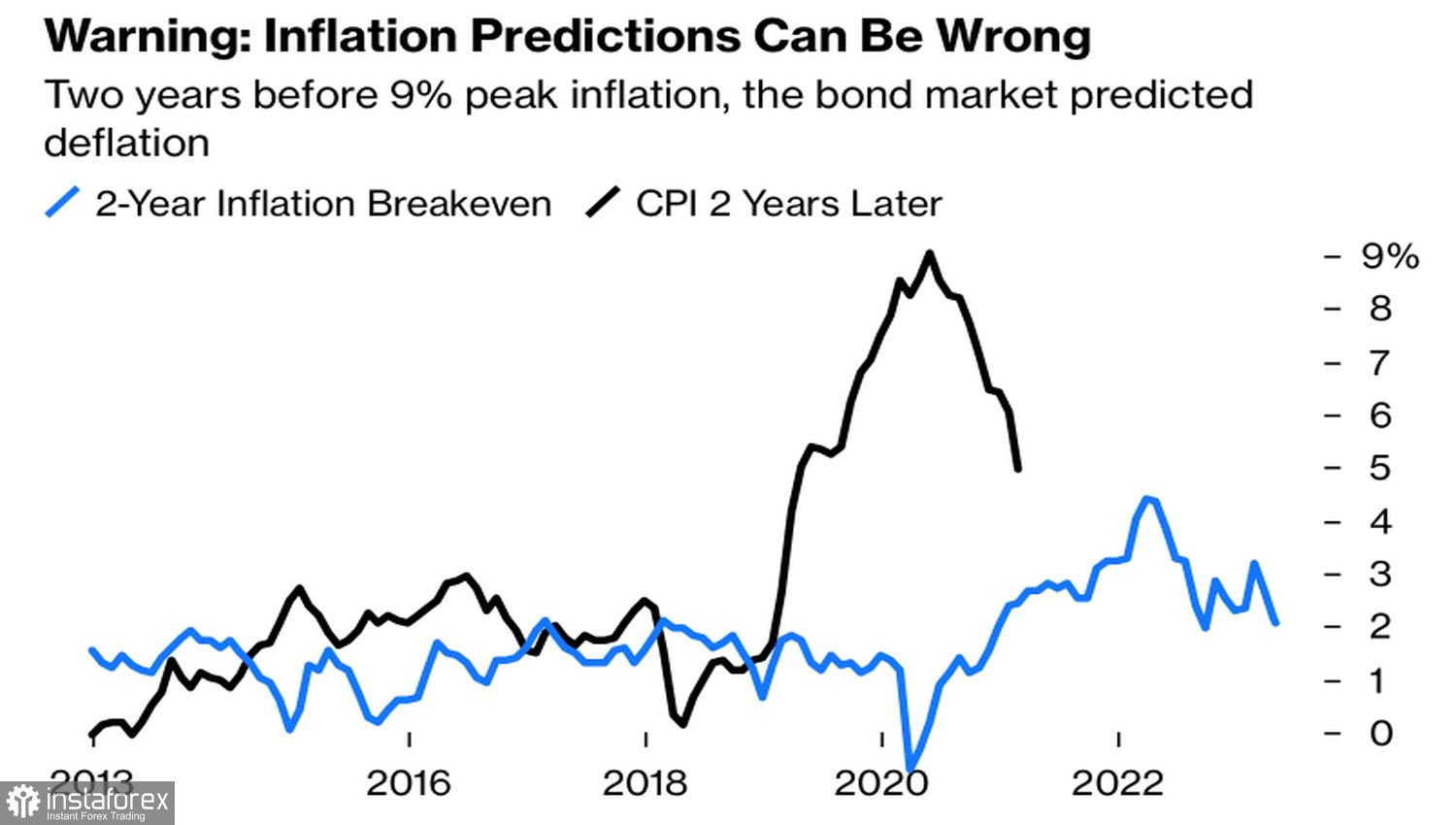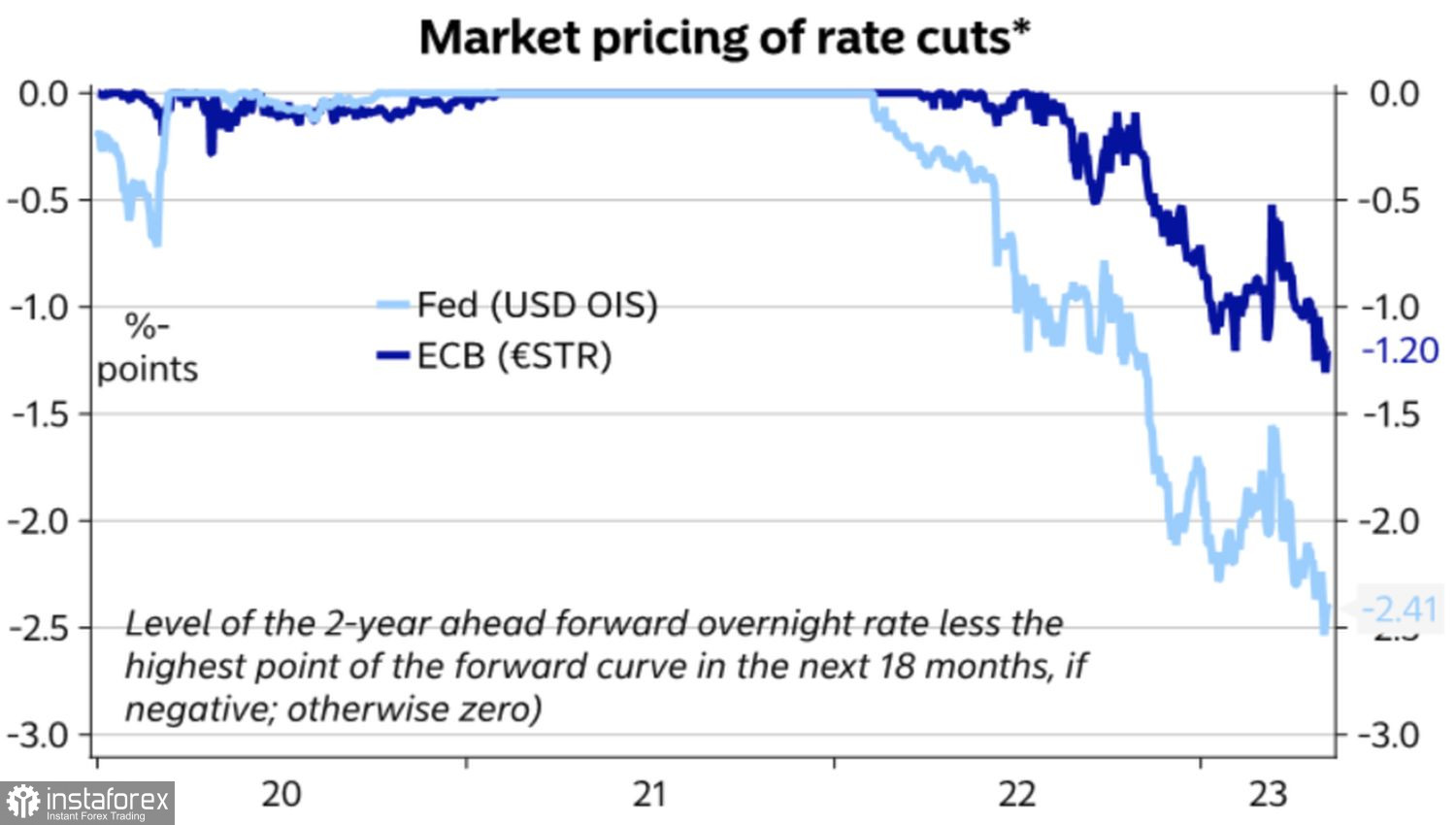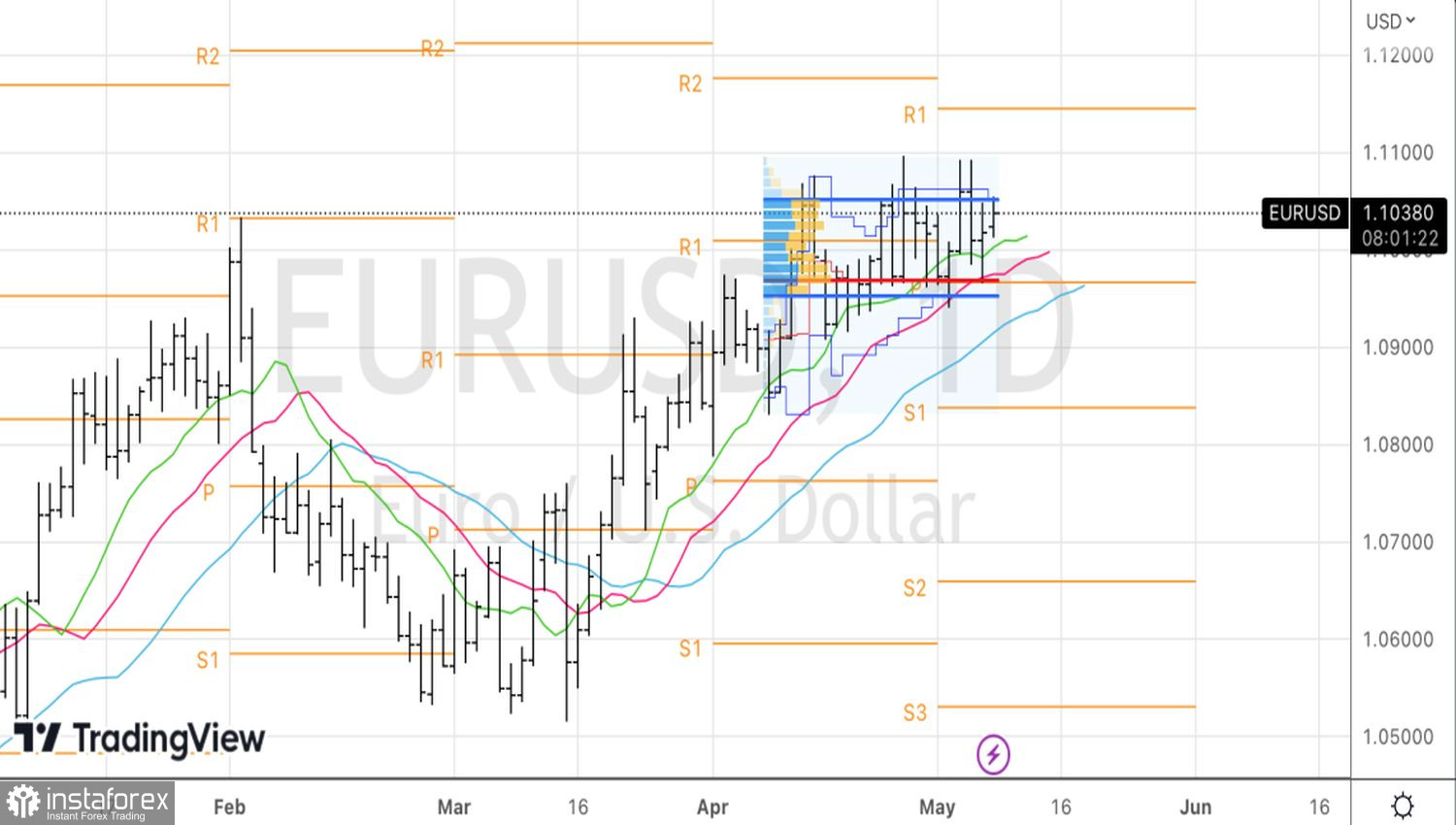The dollar is having a hard time right now. Expectations of a recession is hanging over it like a sword of Damocles. And neither weak nor strong data on the U.S. economy changes the balance of power on Forex. If disappointing statistics come out, investors believe it's a recession. If the release is full of positivity, as in the case of American employment in April, investors remember the tight monetary policy of the Federal Reserve. It will provoke a recession sooner or later anyway. No wonder that after the initial decline, EUR/USD quotes soared sharply.
The dynamics of the pair was likely influenced by the revision of February–March data downwards by 149,000, which offset the impact of the employment growth of 253,000 in April. However, it is difficult for the U.S. dollar to strengthen when investors' minds are deeply ingrained with the ideas of the end of the monetary tightening cycle and a "dovish" reversal.
At their core lies the history and the decline of 2-year inflation expectations in the U.S. to the Fed's required 2%. Since 1974, the Federal Reserve has begun to lower borrowing costs on average five months after they peak. Assuming that May's 5.25% is the ceiling, September–October is a suitable period for a "dovish" reversal. The problem is that the current monetary tightening cycle is special. It's not every time inflation climbs to a 40-year high. Inflation expectations also often fail.
The evolution of inflation expectations and inflation in the U.S. with a time lag

In my opinion, the 75% chance that the Fed will lower the federal funds rate in September is too high. The more strong statistics are released for the U.S., the lower they will drop. This will support the U.S. dollar. The market clearly underestimates its potential. Investors believe that the end of the monetary tightening cycle is a verdict. In reality, it's not.
However, the euro is not in a better position either. After the ECB's May meeting, derivatives lowered the assumed deposit rate ceiling from 3.9% to 3.6%. That is, they expect only one act of monetary tightening. Nevertheless, stable inflation, a strong labor market, and the absence of a recession in the eurozone hint that rates could be higher. In any case, investors overestimate the risks of "dovish" reversals for both the Fed and the European Central Bank.
Market expectations for Fed and ECB rates


In my opinion, strong U.S. statistics will reduce the chances of lowering the federal funds rate in 2023, while in the eurozone, it will increase the likelihood of the ECB continuing the monetary tightening cycle. Their alternation increases the risks of EUR/USD transitioning to a medium-term trading range of 1.085–1.12.
Technically, on the daily chart of the currency pair, there is an accumulation of speculative positions, expressed in consolidation. Breaking beyond the upper boundary of the fair value range of 1.097–1.1055 threatens to continue the rally to 1.109, 1.1125, and 1.114, where sellers will take over. A drop in EUR/USD below 1.101 will be a signal to open short positions.





















